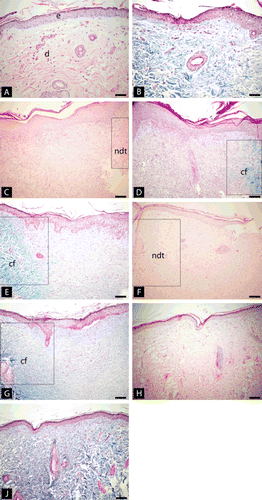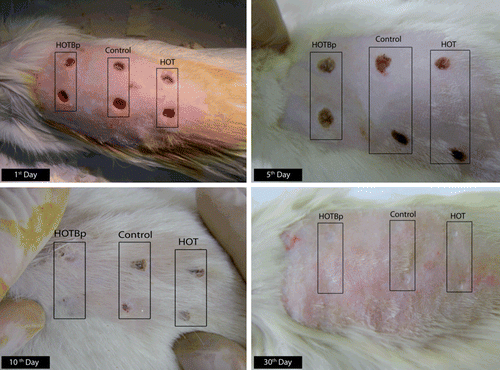Figures & data
Figure 1. Histological sections of cutaneous wound site obtained from the controls, HOT and HOTBp lesions of the rats (A) normal histological skin tissue in the first day. (H&E, ×200) (B) normal histological skin tissue in the first day samples stained with Gomori trichrome stain (×200); (C) Late phase granulation tissues which were characterized with fibroblastic proliferation and scattered lymphocytes in a fifth day subject. Normal dermal tissue is seen at right corner [(rectangular) (Hematoxylin and eosin, ×100); (D) The collagen fibers started to emerge slightly in the granulation tissue in the 5th day samples (Gomori trichrome stain, ×100); (E) a lesion at a 10th day subject. Collagen fibrils is seen as more abundant than the 10th day sample (Gomori trichrome stain, ×100), (F) a sample of control lesion in the 30th day. Healing with fibrous scar formations is seen (Hematoxylin and eosin, ×100) (G) same tissue of F with Gomori trichrome stain (×100) (H, J) Near normal skin tissue without fibros scar tissue seen in a 30th day sample treated with Bellis perennis (Hematoxylin and eosin, Gomori trichrome stain, respectively, ×100). (e) epidermis, (d) dermis, (ndt) normal dermal tissue, (cf) collagen fibers.



